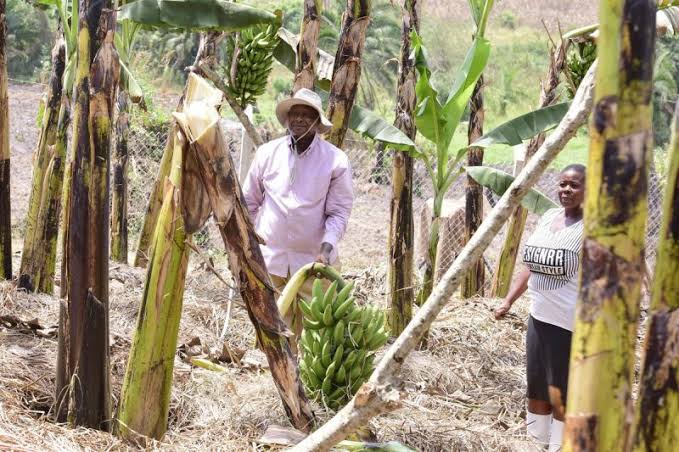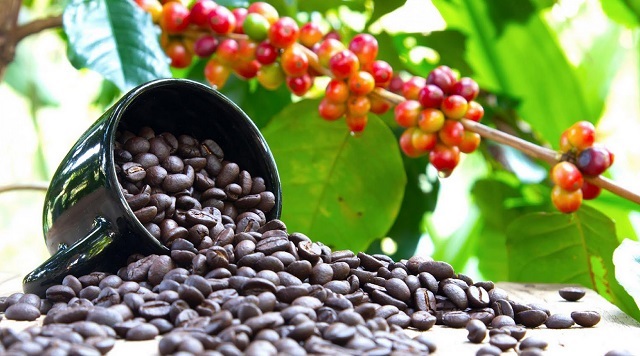Agriculture has long been the backbone of Uganda’s economy, deeply entwined with its history, culture, and livelihoods. The recently concluded Uganda Bureau of Statistics (UBOS) Census 2024 affirms the transformative impact of agricultural policies championed by H.E. the President.
With 61% of households engaged in crop production and 37% involved in livestock farming, agriculture remains the primary source of income and sustenance for the majority of Ugandans. The data presented by the UBOS report, confirms the progress, while also highlighting challenges that must be addressed to fully unlock the sector’s potential.
Uganda’s agricultural prominence dates back to the early 20th century when British administrators like Sir James Hayes Sandler and Sir Hesketh Bell prioritized crop cultivation. Cotton and coffee—introduced during this era—laid the foundation for Uganda’s export economy. By independence in 1962, agricultural revenues funded infrastructure projects like the Owen Falls Dam. However, the sector suffered under subsequent regimes, particularly during the economic turmoil of the Idi Amin era and the Obote II government.
When President Museveni assumed power in 1986, agriculture was in disarray, constrained by economic instability, poor governance, and security challenges. Under the National Resistance Movement (NRM), Museveni prioritized security, economic stabilization, and regional market integration to revitalize agriculture. The emphasis on agricultural transformation was embedded in the NRM’s Ten-Point Program and remains a cornerstone of Uganda’s socio-economic development strategy.
The UBOS Census 2024 reveals that agriculture is pivotal to livelihoods, with 53% of households practicing subsistence farming and 17% engaging in commercial agriculture. Regions such as Bunyoro and Buganda lead in commercial farming (27%), while Karamoja lags at 7%. Notably, households in Teso (87%) and Lango (83%) regions demonstrate the highest participation in agriculture.
Livestock farming has seen considerable growth. Subregions like Acholi and Lango boast the highest chicken ownership (87% and 83%, respectively). Crops such as maize (49%), beans (44%), sweet potatoes (30%), and bananas (27%) dominate cultivation. The Elgon subregion leads in banana farming, with 50% of households engaged in its cultivation.
The adoption of modern farming techniques, however, remains low, with only 4% of agricultural households employing irrigation, down from 6% in 2014. Farmers largely depend on rainwater, boreholes (66%), and wetlands (54%) for irrigation. Regions like Elgon (7%) and Kigezi (6%) show the highest use of irrigation technologies.
A remarkable success story is Uganda’s coffee sector, which has experienced substantial growth. Exports for the year ending September 2024 reached 6.35 million bags, a 3.42% increase in quantity from the previous year. This generated $1.4 billion (UGX 5.04 trillion), representing a 48.97% increase in value. This growth reflects the government’s efforts to promote coffee farming and improve market access for farmers.
Additionally, the government has focused on ensuring fair farm-gate prices, advancing market-oriented production, and enhancing agricultural support services at the sub-county level. These initiatives have enabled farmers to shift from subsistence to commercial agriculture, boosting household incomes and food security.
Despite these achievements, challenges persist. Limited adoption of modern technologies, reliance on rain-fed agriculture, and uneven regional participation hinder rapid growth. Addressing these issues requires concerted efforts to expand irrigation, increase access to agricultural extension services, and invest in infrastructure to support farmers in remote areas.
President Museveni’s focus on agriculture as a pillar of Uganda’s economy has yielded significant gains however, sustained progress depends on embracing government programs like Parish Development Model and leveraging available resources to enhance productivity. With collective effort, Uganda’s vision of becoming a middle-income country is within reach, driven by a thriving agricultural sector.
Kiiza Andrew, MPM.
The writer is public policy analyst and farmer.




















